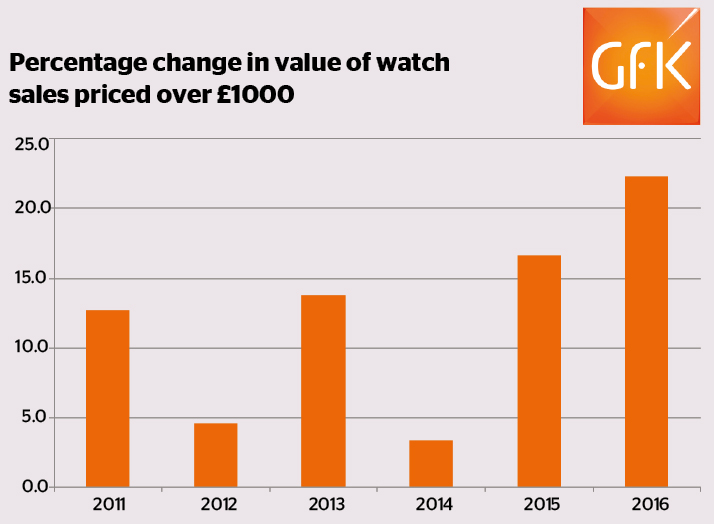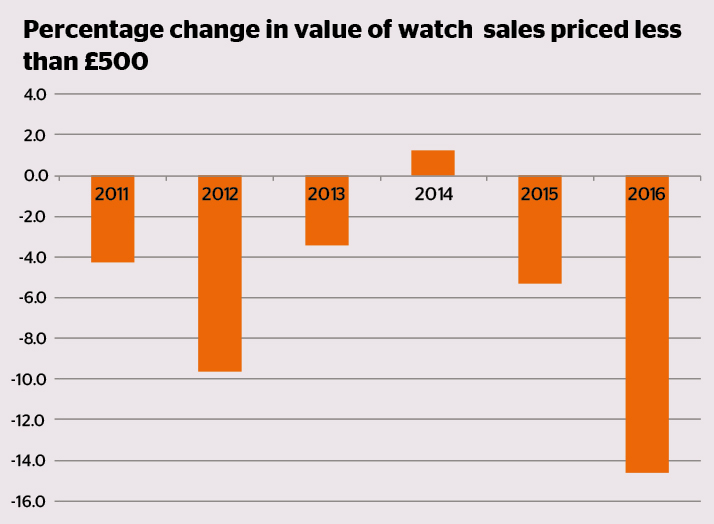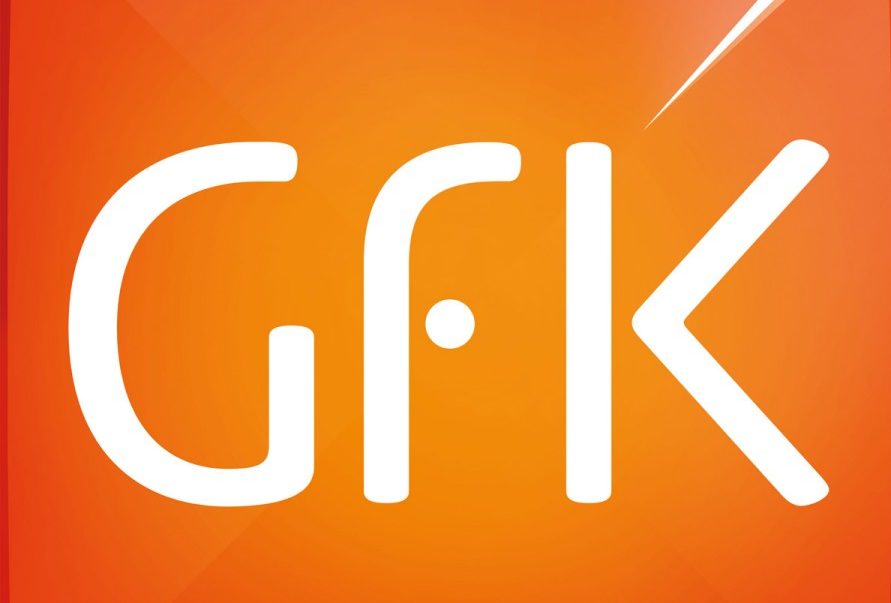GfK has been providing monthly retail data and analysis for many years for WatchPro. But we have never experienced a year like 2016, as luxury watch sales took off and fashion and lifestyle totals tanked. Trying to make sense of what she calls a “tumultuous year” is Gilly Netherwood, senior account manager – watches, for the market research and retail analyst.
The British watch market started 2016 where 2015 finished – in growth. The continued trend of increased sales was driven by the luxury segment, but even though this was a key theme early in 2016, it gave no hint of the explosion in sales which were to come later in the year.
The impact of Brexit has been well documented and it’s no exaggeration to say that sales of luxury watches took off through the middle of 2016. London benefited the most, helped by increased numbers of tourists flocking to the country on the back of the weak pound and, no doubt, the impressive retail space watches enjoy in the capital, which feeds the appetite for luxury watches further.
Outside London luxury watch sales also fared well during the year, despite the referendum result which shook consumer confidence and resulted in the steepest decline in the GfK Consumer Confidence Barometer for 21 years.
However, the consumer confidence index recovered well, largely because there was no immediate discernible change to the cost of living as a result of Brexit.
However, prices for consumer goods are unlikely to remain unaffected and the expectation is that they will rise in 2017, with this possibly encouraging people to spend before the year was out.
The momentum in luxury watch sales certainly continued all through Q4. October was another incredible month, with watches costing over £1,000 up 53% on October 2015, and in November year-on-year sales were up 30%.
December is normally a slower month for luxury because purchases are often gift-driven rather than self-purchase; however December 2016 was again strong for the luxury sector and especially in London.
Our December 2016 period does not correspond directly to 2015 as the two months are 4 weeks vs 5 weeks respectively; given this we would expect sales to show a decline year on year. This is indeed the case for watches overall, but for watches over £1,000 we saw a value rise of 2.2% December 2016 vs December 2015 despite the effective loss of a week’s worth of sales.
One frequently asked question at this time of year is how strong were internet sales for watches over November and December? The online channel has become a battlefield for watches under £500 and although the market under £500 declined overall, in November we saw another increase in online sales share.
“It is only a matter of time before online sales overtake the high street”
In November 2016 internet sales (where the financial transaction takes place online) accounted for 43% of the total value of watches under £500, which was up from 37% in November 2015. This is lower than GfK reported for consumer durable goods overall (which was 48%), but then online watch sales have had a lot of catching up to do, having lagged behind for some years. At current growth rates it’s only a matter of time before online sales overtake the high street in November.
Retailers have long appreciated that the online market is important, but recently we have seen a shift in gear; retailers are now realising that this is a must-win battle and a top priority for 2017, especially as an increasing number of manufacturers are using this as a means to sell direct to the consumer.
All in all 2016 was another year of growth for the Great British watch market, with value sales up 5.7% against 2015. It means GfK has now tracked seven years of continuous growth.


While the market under £500 remains challenging, dropping 12.9% in value and 14.6% in volume as the fashion brands struggle to maintain growth enjoyed in previous years, watches over £1,000 had a very strong year, up 22.3% in value on 2015.
The weight of demand for luxury watches came through both ladies and gents pushing volume up by 12.5% for ladies and 16.9% for gents in 2016 vs 2015. It’s very hard to predict if this growth in luxury can be sustained, but as we start the new year we have already hit another low for the value of sterling on the foreign exchange, so it might just be possible.
On top of this we haven’t factored in the new growth of smart and connected watches; all the performance reported in the results so far has been for traditional watches.
We saw sales value for smart watches rise 93% in November 2016 over November 2015 in the Great Britain market and this doesn’t yet include sales of connected watches from jewellers which we will start tracking from January 2017.
The introduction of connected watches in the traditional watch space under £1,000 will inevitably lead to some cannibalisation of traditional watch sales. Whilst some retailers and manufacturers are reaping additional sales already, many remain to be convinced.
However, it may not be the poisoned chalice some fear; as well as potentially attracting more people to wear a wrist piece, smart and connected watches will inevitably date as technology advances, which could lead to more repeat sales in the long term for those manufacturers and retailers who choose to embrace them.
 By Gilly Netherwood, GfK account manager – watches
By Gilly Netherwood, GfK account manager – watches
gilly.netherwood@gfk.com
+44 207 890 9264
www.gfk.com/uk /
www.twitter.com/gfk_en

